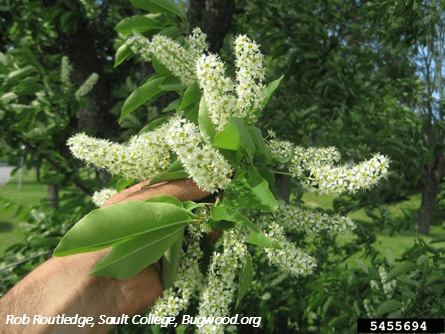
Figure 1. Black cherry foliage and flowers.
Managing the Risk of Cyanide Poisoning from Wilted Cherry Leaves
Black cherry trees are abundant across Maryland's landscape, serving as important timber and wildlife species. However, at times they can pose a risk for cyanide poisoning to livestock.
Understanding the Risk
While standing black cherry trees don’t necessarily pose a threat, severe weather events, such as thunderstorms and high winds, can cause cherry trees to topple or break. If downed cherry trees or limbs are within reach of livestock in a pasture, there is a risk for cyanide poisoning. When the leaves of cherry trees are damaged, like from wilting after a limb has fallen, naturally occurring compounds within the plant can be converted to hydrogen cyanide (HCN). Animals will readily consume these leaves, causing the ingested cyanide to be released into the bloodstream and resulting in toxicity or even death due to the high levels of cyanic acid in wilted leaves.
All animals can be affected by this, but ruminants like cattle and sheep are particularly vulnerable due to their rumen environment. Research has found that as little as 0.46 to 1.82 grams of plant material per pound of body weight can be lethal for ruminants like sheep and cattle. This means that as little as 1.2 to 4.8 pounds of wilted black cherry leaves could be lethal for a 1,200-pound cow, or 0.18 to 0.72 pounds for a 180-pound sheep.
The range in what comprises a lethal dose reflects the HCN potential of the leaves, which can vary based on a number of different factors. For example, younger leaves typically have a greater HCN potential compared to older leaves. Dry periods following normal moisture levels also tend to increase the HCN potential of the leaves. Once leaves have fallen off the branch/tree, HCN levels will usually drop, while leaves that remain connected to branches can contain higher levels. Once leaves are air-dried and have turned brown, they will lose much of their HCN potential.
Signs of Cyanide Toxicity
Signs of cyanide toxicity in livestock can occur very quickly, as soon as 15 to 20 minutes following ingestion. Common symptoms may include slobbering, increased respiration, a weak pulse, and convulsions. Animals are typically distressed, followed by severe weakness even to the point of collapsing. If animals have collapsed there may be kicking/paddling of the legs and seizure-like symptoms. Mucus membranes of the animals will be bright red.
Rapid intervention following ingestion is critical, as cyanide toxicity can quickly become lethal. The entire sequence can progress in as little as 10 to 15 minutes with a high dosage of HCN or as much as 45 to 60 minutes with a lower dose. If animals survive past the first hour, chances for recovery are greater.
Preventive Measures
Cleaning up and removing downed cherry trees and branches from pastures or areas where livestock congregate as soon as possible is essential. As much as possible, try to clear fallen leaves from pastures or wait until the leaves have completely dried up and turned brown before allowing livestock to graze.
Longer term, consider removing cherry trees from the edges of pastures or other livestock holding areas to prevent future risks. Keep in mind that cut cherry trees can still sprout from stumps and roots. Proper use of systemic herbicides can help reduce or eliminate sprouting by killing the root system. On smaller trees, herbicides can be applied as a foliar spray applied directly to the foliage. The best time to apply a foliar spray is after trees have fully leafed out until just before leaf fall. On larger trees, control can be achieved by applying a concentrated herbicide directly to freshly cut stumps. For best results, apply herbicide immediately after cutting. Products with active ingredients like glyphosate, triclopyr, and dicamba can be effective options; be sure to read the label and follow all label directions.
Regardless of the strategy used, be sure to check for sprouting or re-establishment following tree removal. Establishment of new trees can result from dropped seed or from seeds carried by birds.
Conclusion
To protect livestock from cyanide poisoning, it is essential to implement both immediate and long-term strategies. Immediate actions include cleaning up downed trees and leaves, while long-term plans should focus on removing cherry trees from pastures. Consult references like the Mid-Atlantic Field Crop Weed Management Guide and collaborate with local agricultural extension educators for further guidance.
Note: This information is intended to provide guidance on managing the risk of cyanide poisoning in livestock due to wilted cherry leaves. Always consult with a veterinarian or agricultural extension educator for specific advice tailored to your situation.
References:
- Managing Black Cherry Trees Around Livestock- Laura Skillman, University of Kentucky.
- Cyanide Poisoning of Livestock from Cherry Tree Leaves - Leanna Duppstadt and Dwane Miller, Penn State University.
- Summer Storms and Wild Cherry Trees – Rory Lewandowski, Ohio State University.
This article appears in May 2025, Volume 16, Issue 2 of the Agronomy News.
Agronomy News is a statewide newsletter for farmers, consultants, researchers, and educators interested in grain and row crop forage production systems. This newsletter is published once a month during the growing season and will include topics pertinent to agronomic crop production. Subscribers will receive an email with the latest edition.
Subscribe